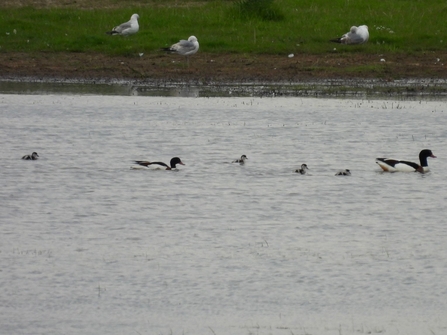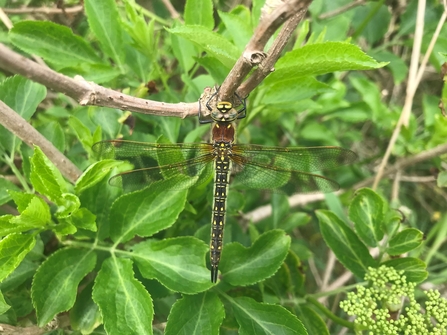Anderby Marsh continues to go from strength to strength with an incredible 27 wader species recorded this year. Avocet numbers have varied daily from 6-12 birds. The first avocet nest was noted on the 17th May followed by two more the following week. At least three pairs of lapwing are also now nesting after much displaying in March and April. A pair of little ringed plover have also been showing signs of breeding activity but have not yet settled down.
One of the biggest surprises of the month was the sudden appearance of a shelduck on the marsh with four small chicks on the 18th. It is thought that they bred on neighbouring farmland (shelducks tend to nest in rabbit burrows or even in amongst hay stacks) and are now using the marsh to make use of the feeding opportunities.







